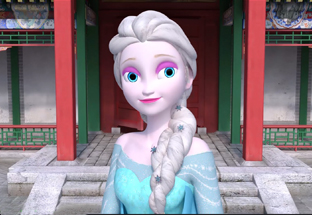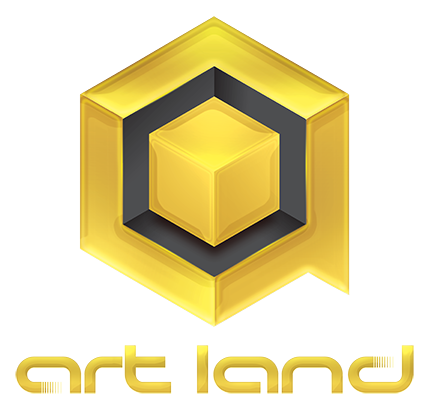What is 3D character animation
Effective 3D visualizations attract new consumers and help keep customers. Indispensable for educational videos and the popularization of scientific discoveries, as an illustration, material for presentations and promotional shows.
Creation of 3D animation brought advertising to a new level of possibilities.
3D animation in the video adds spectacular realistic special effects or visualizes what is impossible to shoot in reality.
3D technology allows you to create colorful characters and even entire fictional worlds.
At the same time, an animated video in which a riot of fantasy manifests itself can offend and alienate customers. Therefore, we approach the creation of three-dimensional images in all seriousness.
On the contrary, the plot of the video, close to the audience, increases loyalty and improves trading performance.
Using the right combination of programs and the artist’s talent everything in the real world can be visualized in the virtual. Today, no modern film and computer game can do without possibilities of three-dimensional graphics.
Creating computer graphics in films is a tremendous job that hundreds of professionals are working on.
From scriptwriters and directors to an army of 3D artists: they are engaged in modeling, texturing, animation, rigging and visualization of characters and the virtual world.
The main factors in the process of creating graphics:
- terms of work;
- level of complexity and quality of models;
- project’s budget.
Who are 3D characters?
Any author wants his main character to be a person, not a flat cartoon from a third-rate comic book. The person arouses curiosity, attracts attention, makes you empathize, without leaving anyone indifferent. Recall the lively, powerful images of Hamlet, Charles Foster Kane or Don Vito Corleone.
In the virtual world, such characters are called “3D” or “three-dimensional characters”. Graphically, three-dimensionality is the length, width, and depth. In the virtual world of 3D characters, 3-D relates to the physical, sociological, and psychological dimensions. Let’s take a closer look:
- Physical dimension: everything regarding appearance, as well as the manner of speaking, dressing, biological age, gestures, facial expressions.
- Sociological dimension: family, character’s social status, character’s relationship with other people, his education, profession, cultural and national affiliation.
- Psychological dimension: the personality of the character that distinguishes him from the rest; worldview, characteristics of character and mental makeup, dreams, hobbies, abilities, habits, emotions, phobias, likes and dislikes.

The author, developing an image in three dimensions, receives a so-called “three-dimensional character” with a pronounced personality: name, appearance, character, age, biography, intelligence, self-esteem, as well as his only manner of communication.
Features of the process of creating computer games
Unlike a movie, a game is an interactive interaction between a person and the virtual world. Therefore, the main factors when creating a game are:
- interactivity;
- smooth functioning;
- and only then the visual aspect.
The modeler is limited by the capabilities of the game engine and console. Often a strict number of polygons is set for each individual element. A well-presented idea will reach the consumer, even if the video has a small timing or a limited budget.
The emphasis on creating 3D visualization is not only on high-quality web graphics but also on content.
No one is interested in watching meaningless videos, even with a fantastic design. Therefore, during production, attention to all stages must be paid: the script, the nature of the character, editing, dubbing.
Main stages of the creation and visualization of 3D characters in the cinema and game industries
Modeling
the creation of three-dimensional objects.
Texturing
overlay textures and materials on a 3D model.
Rigging
(from the English. Rig – equipment) – creating a virtual “skeleton”, a set of “bones”/”joints” for the subsequent animation of the character.
At this stage, animation tools for animators are added, so that during the animation they can calmly interact with them, like ordinary puppeteers with their puppets.
When the models are approved, they proceed to the stage of the ridge (creating a skeleton for the animator, so that he can just control the character) and drawing textures, and the model that has gone through all these stages goes to animation and final visualization.
Some models return back to models to correct errors that are clearly visible in lighting and animation.
Animation
“revitalization”, animation of a three-dimensional character. At this stage, animation tools for animators are added, so that during the animation they can calmly interact with them, like ordinary puppeteers with their puppets.
When the models are approved, they proceed to the stage of the ridge (creating a skeleton for the animator, so that he can just control the character) and drawing textures, and the model that has gone through all these stages goes to animation and final visualization.
Some models return back to models to correct errors that are clearly visible in lighting and animation.
Rendering (3D visualization)
visualization of the created graphics and recording.
Compositing
combining individual elements into the final scene. For example, the integration of 3D scenes in the shooting material, color correction and the addition of effects.
In our modern century with super powerful computers in 3D animation, the same principles are used as with 2D animation, that is, both in Disney and in other cartoons. Even if we used digital costumes that turn human movements into information (record the coordinates of the movements of arms, legs, etc.) and then transferred them to the characters, we would all have to cleanse these actions from different jumps (errors of the motion capture system) and even more so add additional detailed animation on the hands, eyes and facial expressions.
Some experts create visual effects, which are then simply superimposed on top of the final picture.
Post-production is the last stage in creating a cartoon, and this part of the work includes: editing video, editing video material (color correction, adding depth of field, etc.), combining visual effects and characters, working with actors to voice characters.
Read more about ArtLand 3D character animation Services

Leave a Reply
Want to join the discussion?Feel free to contribute!